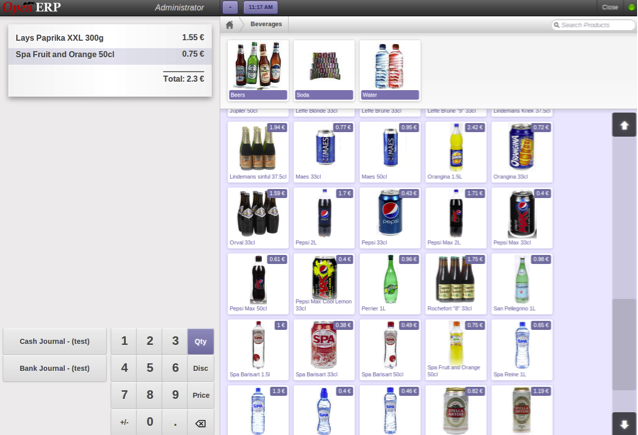
OpenERP release 7.0, which just came out, shows some real advantages in terms of accessibility. By refining the website, OpenERP wants to prove that the new release is not merely an update but a new product with a new mind-set.
The new features
Indeed, the ERP’s web interface is now purified and simplified to match the fashions. Today’s user interfaces are intended to be as simple and as designed as possible. The new web interface displays only the needed information, it loads fast, it navigates fast and it only encompasses the modules that you have chosen. If you want a new functionality, you just have to install the right module by pressing one button.
OpenERP was built as a container and is extensible thanks to the modules. It now states this desire by providing a real Apps container. Modules are now considered as applications that you can plug to your ERP to extend its behaviour and functionalities. Some new applications are emerging such as Social Network, which facilitates the internal communications by providing a messaging tool for chatting and allowing user authentication thanks to Google and Facebook accounts.
But unlike these questionable utility applications, some of them can become business critical such as the redesigned Point of Sale module that provides a new useful interface. A lot of partner projects are emerging around this feature; I guess this is the most wanted module for this release.
It is meant to facilitate and speed up business processes. In the same registry, the contract management has been enhanced to facilitate usage and to improve functionalities and possibilities:
- Manage the validity of the contract (duration, maximum number of hour/tickets, terms and conditions)
- Handle the invoicing spread in time (fixed price, on time/materials basis, invoice by phases)
- Cover the contract’s price (price by hour by user, conditions according to quantities)
- Forecast of invoices, define budgets and analyse costs and revenues
- Link contracts to analytic accounts (costs and revenues) and projects (manage related tasks, timesheets or issues)
- Follow up (once a week, alerts for contracts renewals are sent automatically to a salesperson with the indication of what to do for each contract)
Some other interesting applications are explained in the release note available on the website.
Migrating to the new release
As told before, the new release is not just a minor update – a lot of things have changed: from the user interface point of view and from developers point of view.
First, the traditional web server is merged to the main server; you no longer have two servers to start – and that’s good news.
Secondly, the internal model is changing. For example partners are now considered as contacts. And users have a contact profile created automatically. In addition, internal objects may change (such as osv.osv becoming osv.Model) and behaviour too (such as the need to store a calculated field if you want it to be shown in a graph).
So the migration of a module from version 6.x to 7.0 might be difficult; as such OpenERP proposes to handle your migration for fees, but note that an audit is made to ensure the migration is possible.
The support on version 6.x is coming to the end, obliging companies to migrate. OpenERP wants to show that the new release is a new departure and we are excited to work with this kind of software. But I hope new major updates will not come too fast since we can’t rebuild modules every month!
This way, OpenERP shows that they want to provide a stable and professional open source ERP to make it accessible for companies with a small infrastructure and to provide an alternative to huge, abstract and costly ERPs.

![Thumbnail [90x90]](https://www.dbi-services.com/blog/wp-content/uploads/2022/08/STH_web-min-scaled.jpg)